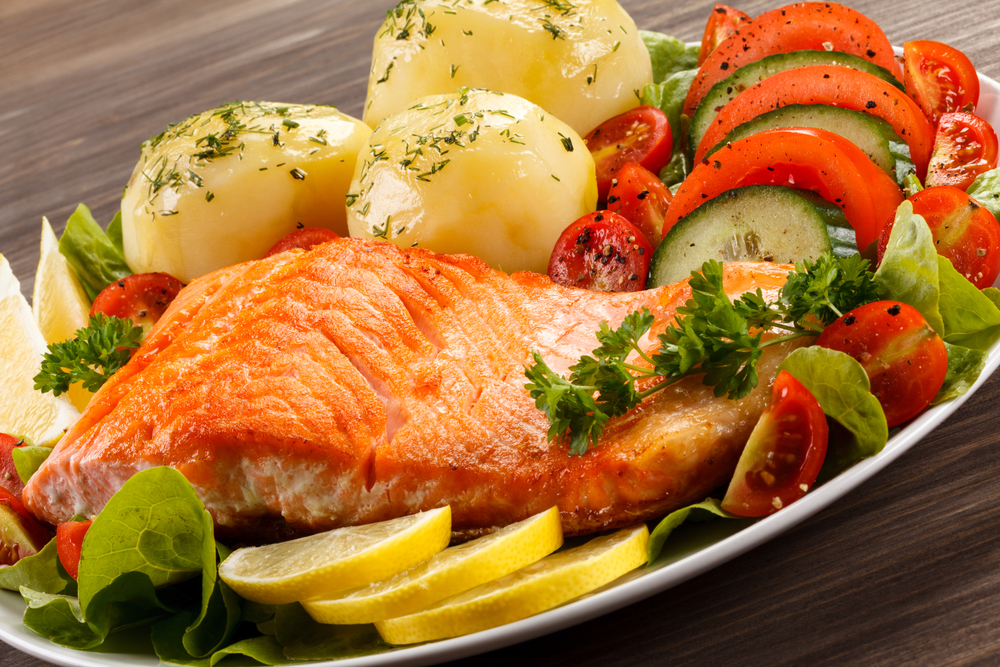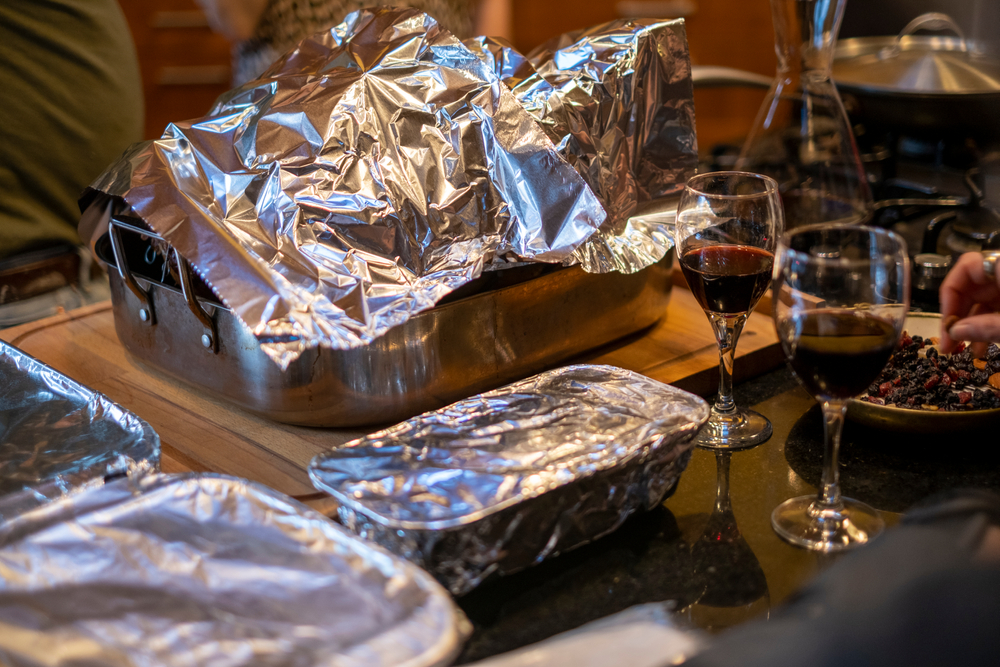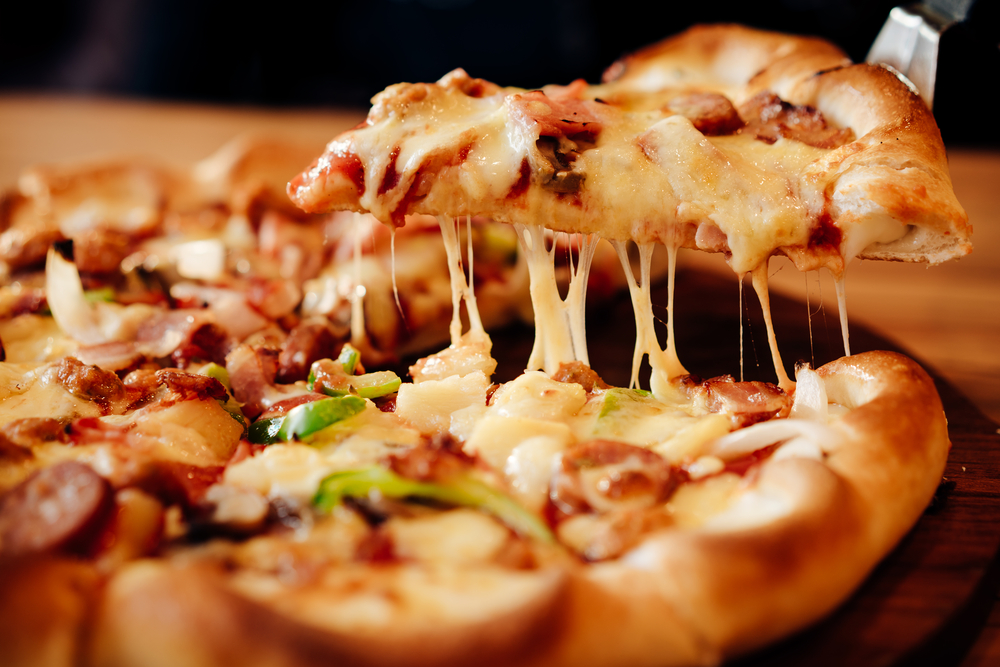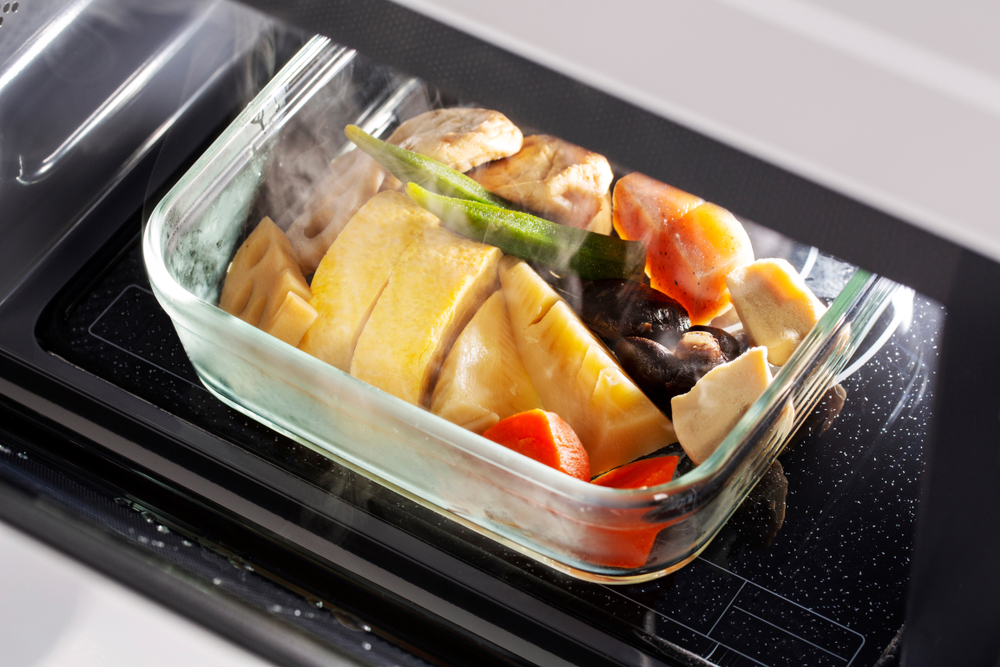Cooked food is a staple of many households, but how long can it sit out before it becomes unsafe to eat? The answer to this question is essential for anyone who wants to avoid foodborne illness.
Leaving cooked food out for too long can lead to the growth of harmful bacteria that can cause illness, and it is important to understand the risks involved and how to avoid them.
Understanding food safety is crucial when it comes to cooked food. The danger zone concept refers to the range of temperatures between 40 °F and 140 °F, where bacteria grow most rapidly.
Cooked food that is left out at room temperature for more than two hours is at risk of bacterial growth and should be consumed, stored correctly, or thrown away. If the temperature is above 90 °F, food should not be left out for more than one hour.
By following these guidelines, people can reduce the risk of foodborne illness and enjoy their meals safely.
Key Takeaways
- Cooked food left out for more than two hours can be unsafe to eat due to bacterial growth in the danger zone.
- The temperature danger zone is between 40 °F and 140 °F, and food left out at room temperature for more than two hours should be consumed, stored correctly, or thrown away.
- Following food safety guidelines, such as storing and refrigerating cooked food properly, reheating leftovers safely, and understanding specific guidelines for different types of food, can help prevent foodborne illness.
Understanding Food Safety

When it comes to food safety, it is important to understand how long cooked food can sit out before it becomes unsafe to eat. The U.S. Department of Agriculture (USDA) and FoodSafety.gov provide guidelines to help ensure that food is safe to consume.
The general rule of thumb is that cooked food can only sit out at room temperature for a maximum of two hours. However, this time limit can vary depending on several factors, including the type of food, the temperature of the room, and the presence of bacteria.
According to the USDA, leaving food out too long at room temperature can cause bacteria, such as Staphylococcus aureus, Salmonella Enteritidis, Escherichia coli O157, and Campylobacter, to grow to dangerous levels that can cause illness.
Therefore, it is important to follow these guidelines to ensure that food is safe to eat.
It is also important to note that if the temperature outside or inside the house is 90°F or above, the two-hour time limit should be cut in half to one hour. This is because higher temperatures can cause bacteria to grow more quickly.
To ensure food safety, it is recommended to refrigerate or freeze any cooked food that will not be consumed within two hours. Additionally, it is important to properly store and reheat leftover food to prevent the growth of bacteria.
By following these guidelines, individuals can help prevent foodborne illnesses and ensure that the food they consume is safe to eat.
The Danger Zone Concept

The “Danger Zone” is a term used to describe the temperature range in which bacteria can grow rapidly on food, leading to the risk of foodborne illness. This temperature range is between 40°F and 140°F (or 5°C and 57°C).
Leaving cooked food out of the refrigerator for too long can cause it to enter the Danger Zone, where bacteria can grow and multiply quickly. The longer food stays in the Danger Zone, the greater the risk of foodborne illness.
According to the USDA, perishable foods should not be left in the Danger Zone for more than two hours. If the temperature is above 90°F, the maximum time is reduced to one hour.
To prevent food from entering the Danger Zone, it is important to keep hot foods hot (above 140°F) and cold foods cold (below 40°F). Here are some tips for keeping food safe:
- Use a food thermometer to ensure that cooked food is at the appropriate temperature before serving or storing.
- Store food in shallow containers to promote faster cooling.
- Place food in the refrigerator within two hours of cooking.
- When reheating food, make sure it reaches an internal temperature of 165°F to kill any bacteria that may have grown during storage.
By following these simple tips, you can help ensure that your food stays safe and free from harmful bacteria.
Impact of Room Temperature on Cooked Food
Cooked food left out at room temperature can quickly become a breeding ground for bacteria, which can cause foodborne illnesses. The temperature range between 40°F and 140°F is considered the “danger zone” for food, as bacteria can double in number in as little as 20 minutes within this range.
The longer food is left out in the danger zone, the greater the risk of bacterial growth and the higher the likelihood of foodborne illness.
In general, cooked food should not be left out at room temperature for more than two hours. If the temperature outside or inside the house is 90°F or above, the time limit should be reduced to one hour.
It is important to note that the impact of room temperature on cooked food can vary depending on the type of food and how it was prepared. For example, some foods like rice and potatoes can develop a toxin called Bacillus cereus if left out at room temperature for too long, even if they are properly cooked.
To minimize the risk of foodborne illness, it is recommended to refrigerate cooked food as soon as possible after it has been served. If the food has been sitting out for more than two hours, it is best to discard it.
In addition, it is important to practice good food safety habits when preparing and serving food. This includes washing hands and surfaces thoroughly, using separate cutting boards for raw meat and other foods, and cooking food to the appropriate temperature to kill harmful bacteria.
Overall, the impact of room temperature on cooked food should not be underestimated. It is crucial to follow food safety guidelines to prevent the growth of harmful bacteria and reduce the risk of foodborne illness.
Bacteria and Foodborne Illness

Leaving cooked food out at room temperature for too long can cause harmful bacteria to grow, leading to foodborne illnesses. Bacteria grow most rapidly in the temperature range between 40 °F and 140 °F, doubling in number in as little as 20 minutes.
Some of the harmful bacteria that can grow on food include Staphylococcus aureus, Salmonella Enteritidis, Escherichia coli (E. coli), and Campylobacter. These bacteria can cause food poisoning, which can lead to symptoms such as diarrhea, vomiting, and even death in severe cases.
One example of foodborne bacteria is Staphylococcus, which can produce poisons or toxins that are not destroyed by high cooking temperatures if the food is left out at room temperature for an extended period of time.
To prevent foodborne illness, it is important to keep cooked food out of the temperature danger zone, which is between 40 °F and 140 °F. Cooked food should be refrigerated within two hours of cooking or removed from an appliance keeping it warm. If the temperature is 90 degrees or above, foods should be refrigerated after only one hour.
Leftovers can be kept for 3 to 4 days in the refrigerator. After that, the risk of food poisoning goes up. It is important to reheat leftovers to 165 °F or higher before eating to kill any bacteria that may have grown on the food.
In summary, leaving cooked food out at room temperature for too long can cause harmful bacteria to grow, leading to foodborne illnesses. It is important to keep cooked food out of the temperature danger zone and refrigerate leftovers promptly to prevent the growth of harmful bacteria.
The Two-Hour Rule
When it comes to food safety, the two-hour rule is an important guideline to keep in mind. This rule states that cooked food can only be left out at room temperature for a maximum of two hours before it becomes unsafe to eat.
The reason for this rule is that bacteria can grow rapidly in food that is left at room temperature. Some types of bacteria can double in number every 20 minutes, so if food is left out for too long, the number of bacteria can reach dangerous levels that can cause illness.
It’s important to note that the two-hour rule applies to all cooked food, whether it’s meat, poultry, fish, vegetables, or grains. It also applies to leftovers and takeout food.
If food has been left out for more than two hours, it should be thrown away. If it’s been less than two hours, it can be stored in the refrigerator or freezer to prevent bacteria growth.
It’s worth noting that the two-hour rule is a general guideline, and there are some exceptions. For example, if the room temperature is above 90°F (32°C), the maximum time that food can be left out is one hour. Additionally, some types of food, such as hard cheese and cured meats, can be left out for longer periods without spoiling.
In summary, the two-hour rule is an important guideline to follow for food safety. Cooked food should not be left out at room temperature for more than two hours to prevent the growth of harmful bacteria.
Storing and Refrigerating Cooked Food

When it comes to storing and refrigerating cooked food, it’s important to follow proper food safety guidelines to prevent the growth of harmful bacteria. Here are some tips to keep in mind:
- Store cooked food in airtight containers or wrapped tightly in plastic wrap or foil to prevent contamination and drying out.
- Label containers with the date the food was cooked or stored to keep track of how long it’s been in the fridge or freezer.
- Store cooked food in the refrigerator within 2 hours of cooking or reheating. If the room temperature is above 90 °F, food should not be left out more than 1 hour.
- Store cooked food in the freezer for longer-term storage. Cooked meat and poultry can be stored in the freezer for up to 6 months, while cooked vegetables and leftovers can be stored for up to 3 months.
- When reheating cooked food, make sure it reaches a temperature of 165 °F to kill any bacteria that may have grown during storage.
To ensure the safety of stored cooked food, it’s important to keep the refrigerator and freezer at the proper temperature. The USDA recommends keeping the refrigerator temperature at 40 °F or below and the freezer temperature at 0 °F or below.
Covering cooked food with a lid or plastic wrap can help prevent contamination and drying out, but it’s important to let the food cool to room temperature before covering it. Covering hot food can trap moisture and create a breeding ground for bacteria.
In summary, storing and refrigerating cooked food properly is essential for food safety. Follow these tips to ensure your cooked food stays fresh and safe to eat.
Reheating Leftovers Safely
When reheating leftovers, it is important to ensure that the food reaches a safe temperature to prevent the growth of harmful bacteria. The Academy of Nutrition and Dietetics recommends using a food thermometer to ensure that the internal temperature of the food reaches at least 165°F before consuming.
It is also important to reheat leftovers properly. Leftovers should be reheated in the oven, microwave, or on the stove, and should be stirred or rotated frequently to ensure even heating. If using a microwave, cover the food to prevent moisture loss and to ensure that the food heats evenly.
When reheating hot dishes, such as soups or stews, it is important to bring the food to a rolling boil before consuming. This will ensure that any bacteria that may have grown during storage or reheating are killed.
Leftovers should only be reheated once, as repeated heating and cooling can increase the risk of foodborne illness. It is also important to refrigerate any leftovers within two hours of cooking or reheating to prevent the growth of harmful bacteria.
In summary, reheating leftovers safely involves using a food thermometer to ensure that the food reaches a safe temperature, reheating the food properly, and refrigerating any leftovers within two hours of cooking or reheating. By following these guidelines, individuals can reduce their risk of foodborne illness and enjoy their leftovers safely.
Specific Guidelines for Different Types of Food

Different types of food have different guidelines for how long they can sit out at room temperature before becoming unsafe to eat. Here are some specific guidelines for different types of food:
Meat, Fish, and Poultry
Meat, fish, and poultry should not be left out at room temperature for more than two hours. If the temperature is above 90°F, they should not be left out for more than one hour. These foods should be refrigerated or frozen promptly after cooking to prevent bacterial growth.
Salads
Salads that contain mayonnaise or other dairy products, such as potato salad, should not be left out at room temperature for more than two hours. If the temperature is above 90°F, they should not be left out for more than one hour. Salads without dairy products can be left out for up to four hours.
Fruits and Vegetables
Fruits and vegetables can be left out at room temperature for up to four hours. After that, they should be refrigerated to prevent spoilage.
Cooked Foods
Cooked foods, such as casseroles and soups, should not be left out at room temperature for more than two hours. If the temperature is above 90°F, they should not be left out for more than one hour. These foods should be refrigerated promptly after cooking to prevent bacterial growth.
Sandwiches
Sandwiches can be left out at room temperature for up to two hours. If the temperature is above 90°F, they should not be left out for more than one hour. Sandwiches with perishable fillings, such as meat, cheese, or mayonnaise, should be refrigerated promptly after making.
Dairy Products
Dairy products, such as milk and cream-filled pastries, should not be left out at room temperature for more than two hours. If the temperature is above 90°F, they should not be left out for more than one hour. These foods should be refrigerated promptly after use to prevent spoilage.
Overall, it is important to follow these guidelines to prevent foodborne illness and ensure that food is safe to eat.
Slow Cookers, Buffets and Restaurants
When it comes to keeping cooked food safe, slow cookers, buffets, and restaurants all need to follow the same guidelines. The USDA recommends that hot foods should be held at 140 °F or warmer, while cold foods should be held at 40 °F or colder.
Slow cookers can be a convenient way to prepare and serve food, but it’s important to use them safely. Always start with clean hands, utensils, and surfaces, and thaw meat or poultry before putting it into the slow cooker.
If you’re using frozen pieces, they may not reach 140 °F quickly enough and could potentially result in foodborne illness. Preheating the cooker and adding hot liquids, if possible, can help ensure that the food reaches a safe temperature.
Buffets and buffet-style events can be a fun way to feed a crowd, but they also require careful attention to food safety. Hot foods should be kept hot with chafing dishes, slow cookers, or warming trays, and should be held at 140 °F or warmer.
Cold foods should be kept cold by nesting dishes in bowls of ice or using smaller serving platters that can be replaced within two hours or less (or one hour if the temperature is above 90 °F).
Restaurants also need to follow strict guidelines for keeping cooked food safe. The FDA Food Code requires that potentially hazardous foods be held at 41 °F or below or 135 °F or above, and that they be cooled from 135 °F to 70 °F within two hours and from 70 °F to 41 °F or below within an additional four hours.
Restaurants must also follow proper hand hygiene and sanitation practices to prevent the spread of foodborne illness.
By following these guidelines, slow cookers, buffets, and restaurants can help ensure that the food they serve is safe and free from harmful bacteria.
Symptoms of Foodborne Illness

When someone eats food that has been contaminated with harmful bacteria, viruses, or parasites, they can develop a foodborne illness.
The symptoms of foodborne illness can vary depending on the type of bacteria or virus that has contaminated the food, but some common symptoms include:
- Nausea
- Vomiting
- Diarrhea
- Abdominal pain and cramping
- Fever
- Headache
- Dehydration
These symptoms can range from mild to severe, and they can last anywhere from a few hours to several days. In some cases, foodborne illness can even lead to hospitalization or death.
It’s important to note that not everyone who eats contaminated food will develop symptoms of foodborne illness. Some people, such as young children, the elderly, and those with weakened immune systems, are more susceptible to developing severe symptoms.
If someone suspects that they have a foodborne illness, they should seek medical attention immediately. In some cases, foodborne illness can lead to complications such as paralysis or other long-term health problems.
In conclusion, it’s crucial to handle and store food properly to prevent contamination and the development of foodborne illnesses.
Preventing Foodborne Illness
Leaving cooked food out for too long can increase the risk of foodborne illness. Bacteria can grow rapidly at room temperature, especially between 40 °F and 140 °F. To prevent foodborne illness, it is important to follow some basic guidelines.
Firstly, it is important to keep hot food hot and cold food cold. Hot food should be kept at a temperature of 140 °F or above, while cold food should be kept at a temperature of 40 °F or below. This can be achieved by using a food thermometer to check the temperature of the food.
Secondly, it is important to store food properly. Cooked food should be stored in the refrigerator or freezer within two hours of cooking. If the temperature outside is above 90 °F, food should be refrigerated within one hour of cooking.
Thirdly, it is important to practice good hygiene. Hands should be washed thoroughly with soap and water before handling food. Surfaces and utensils should be cleaned and sanitized regularly.
Lastly, it is important to communicate with others about food safety. If you are hosting a party or event, make sure to inform your guests about the importance of food safety. Encourage them to wash their hands and to avoid cross-contamination.
By following these guidelines, you can reduce the risk of foodborne illness and ensure that your cooked food stays safe to eat.
Recipes and Food Safety
When preparing and serving food, it is important to keep in mind the potential for bacteria growth and foodborne illness. Cooked food should be kept at safe temperatures to prevent the growth of harmful bacteria.
Perishable foods, such as meat, poultry, fish, dairy products, and cooked vegetables, should not be left at room temperature for more than two hours. If the temperature outside or inside the house is above 90°F, this time should be reduced to one hour.
To ensure food safety, it is recommended to use a food thermometer to check the internal temperature of cooked meat, poultry, and fish. The USDA recommends the following safe minimum internal temperatures:
- Beef, pork, veal, and lamb (steaks, roasts, and chops): 145°F
- Ground meats: 160°F
- Poultry (chicken, turkey, duck): 165°F
- Fish and shellfish: 145°F
When preparing recipes, it is important to follow the instructions carefully, including cooking times and temperatures. If a recipe calls for refrigeration or freezing, it is important to follow these instructions as well.
Leftovers should be refrigerated or frozen within two hours of cooking. When reheating leftovers, they should be heated to an internal temperature of 165°F.
In summary, following food safety guidelines is crucial when preparing and serving cooked food. By following these guidelines, you can reduce the risk of foodborne illness and ensure that your meals are safe and enjoyable.
Related posts:
Frequently Asked Questions
How long can food be left out at room temperature?
Cooked food should not be left out at room temperature for more than two hours. If the temperature is above 90°F, this time should be reduced to one hour. After this time, the food should be consumed, stored correctly, or thrown away.
Can you eat cooked food left out overnight?
No, it is not safe to eat cooked food that has been left out overnight. Bacteria can grow rapidly on food that is left at room temperature, and this can cause food poisoning.
It is important to refrigerate or freeze cooked food promptly to prevent the growth of harmful bacteria.
How long can perishable foods be left out at room temperature?
Perishable foods, such as meat, poultry, fish, dairy products, and cooked vegetables, should not be left out at room temperature for more than two hours. If the temperature is above 90°F, this time should be reduced to one hour. After this time, the food should be consumed, stored correctly, or thrown away.
How long can cooked food stay in the fridge?
Cooked food can be stored in the fridge for up to four days. It is important to store the food in a covered container and to label it with the date it was cooked. If the food has been left out at room temperature for more than two hours, it should be discarded and not stored in the fridge.
Is it safe to eat cooked food left out for 4 hours?
No, it is not safe to eat cooked food that has been left out for four hours. Bacteria can grow rapidly on food that is left at room temperature, and this can cause food poisoning. It is important to refrigerate or freeze cooked food promptly to prevent the growth of harmful bacteria.
Can you eat cooked food left out for 5 hours?
No, it is not safe to eat cooked food that has been left out for five hours. Bacteria can grow rapidly on food that is left at room temperature, and this can cause food poisoning. It is important to refrigerate or freeze cooked food promptly to prevent the growth of harmful bacteria.







